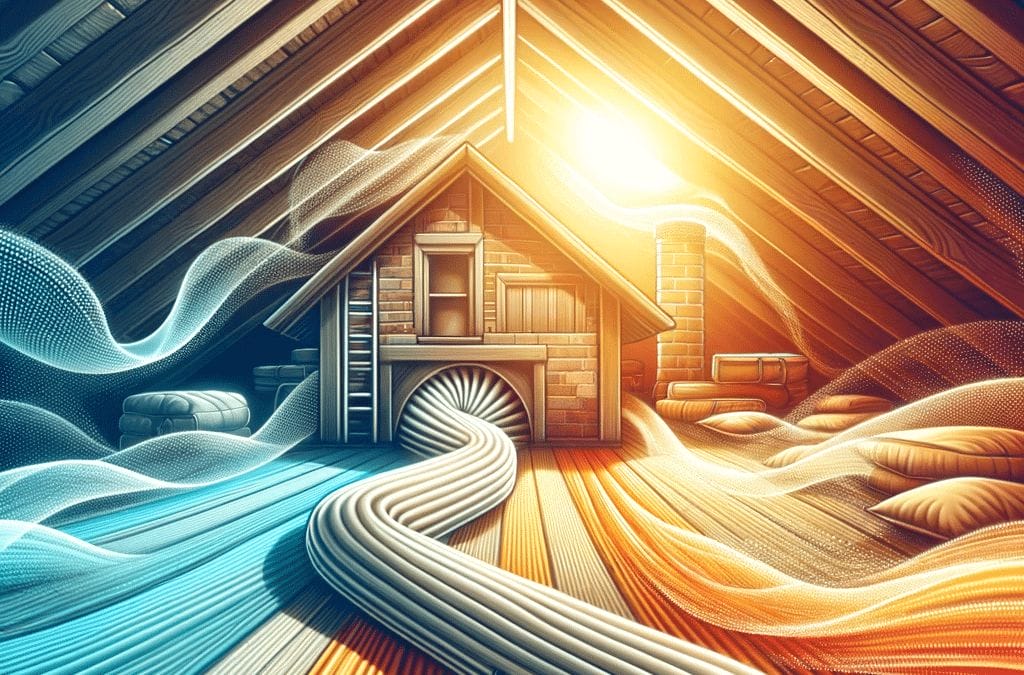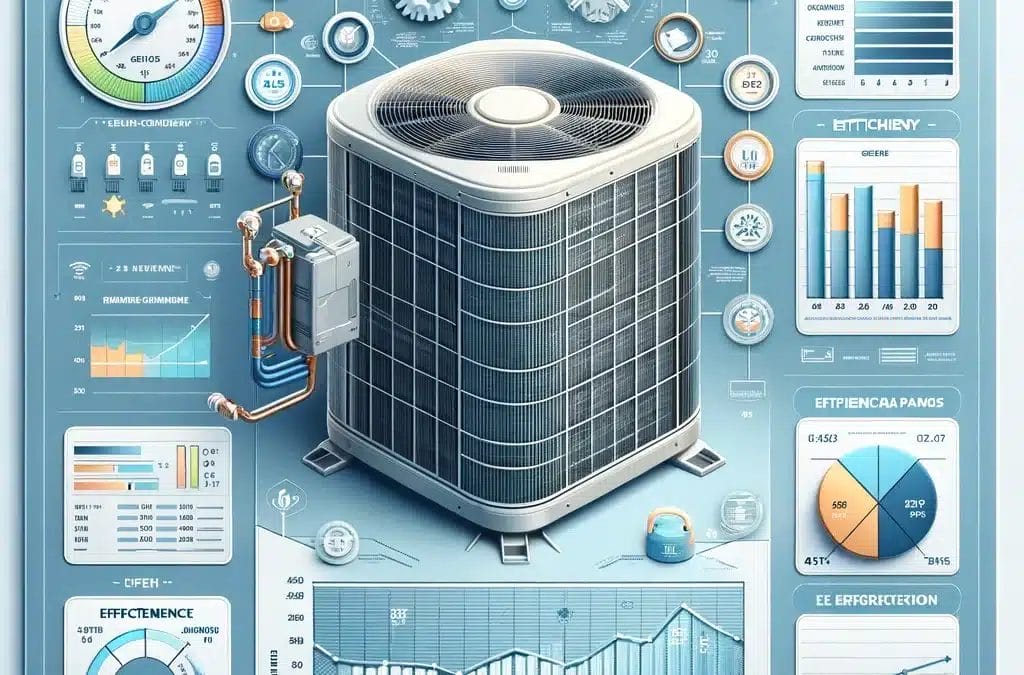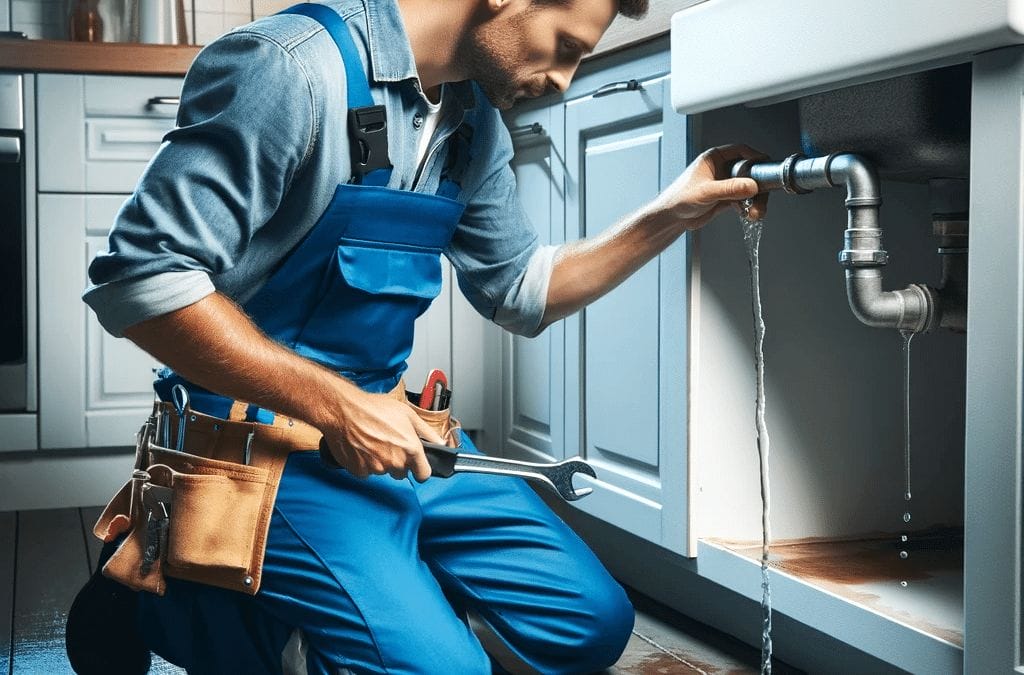


Your AC Replacement Guide: Choosing Companies, Systems, Size & More!
As the sweltering heat of summer takes hold or the icy fingers of winter start to draw near, the importance of our air conditioning units hit the forefront of our minds. But what happens when this little haven of comfort begins to falter, making ominous rattling noises, or worse, abruptly and defiantly decides to give up the ghost altogether? If you’ve lamented, brooded, and finally conceded that you need an AC replacement, we’ve got your soothing balm! Welcome to your comprehensive AC replacement guide – a reliable compass in the mystifying world of BTUs, SEER ratings, compressor types, size requirements, and various other terminologies that can make any brave heart quiver. We’ll also touch on selecting the right company to handle your sacred task. Get ready as we guide you through the winding plains and peaks of an AC replacement journey, to ensure you make choices that work for you — financially, logistically, and comfort-wise. Buckle up; your path to perfect climate comfort awaits!

Understanding the Need for AC Replacement
There are several factors to consider when you determine it’s time for an AC replacement. Age is one of them, as most air conditioning units have a lifespan of 10 to 15 years. If your unit is this age or older and not performing as effectively, it might be time for a replacement. Another is efficiency, if your AC system requires frequent repairs, it is not only inconvenient but also expensive. In such cases, investing in a new, more efficient system makes more sense.
Now, choosing the right AC system can be a daunting task with all the makes and models available. A few key elements to consider are company reputation, system technology, and unit size. You want to make sure the company you’re buying from is reliable and offers good customer service. The system technology should be energy-efficient, helping to lower your utilities. Lastly, the unit size should correspond to your needs, depending on the size and layout of your property. The table below presents an example of how to choose an AC system:
| Company | Technology | Unit Size |
|---|---|---|
| John’s HVAC | High-Efficiency Dual Inverter | 2 tons (Ideal for medium-sized houses) |
| Smith’s Heating and Cooling | Energy Star Central AC | 3 tons (Ideal for larger homes) |
| Anderson’s ACs | Green Tech Cooling | 1 ton (Ideal for small apartments) |
Remember that AC units are not a one-size-fits-all solution. Consulting with professionals is often the best way to ensure you make the right decision for your AC replacement needs.

Choosing the Right AC Replacement Company: Factors to Consider
Doing your homework before you hire an AC replacement company can save you money, time, and stress. One of the first things to look for is a company’s credentials. Make sure the company you hire is licensed, insured, and bonded. This protects you from any liability if an accident occurs during the replacement process. It’s also important that the company technicians are certified and trained in handling different types of AC units, and they follow safety standards. You can check the company’s background including how long it has been in business, its customer reviews, and its BBB rating. What to Look For In an AC Replacement Company
- Accreditations: Look for companies that are accredited by recognized trade bodies.
- Pricing: The company should provide transparent, upfront pricing.
- Warranties: A good AC replacement company will offer warranties.
- Emergency services: Companies that offer emergency services can be life-savers.
- Communication: Good communication before, during, and after the job is very important.
Choosing the right AC system is also crucial. A replacement company should be able to guide you in selecting the right size and type of AC system for your needs. Some of the factors to consider include the size of your home, the climate where you live, and your budget. The System type, Size, and the Energy efficiency of the unit can also significantly affect the operating cost.
| Factor | Description |
|---|---|
| System Type | Understand the differences between split, window, portable & central AC units |
| Size | A system that’s too small or too big won’t cool your home efficiently |
| Energy efficiency | Look for systems with high SEER ratings for greater energy savings |
The right AC replacement company will not only ensure that the installation process is smooth but will also provide valuable guidance on system maintenance to prolong the life of your new AC unit.

Navigating Through AC Systems: Which One is Right for You?
When it comes to AC systems, there’s no one-size-fits-all solution. Different homes have different cooling needs depending on a variety of factors like regional climate, house size, and personal preferences. Before you make that crucial decision, it’s important to understand the different types of AC systems available in the market.
| Type of AC System | Pros | Cons |
|---|---|---|
| Central Air Conditioning | Very efficient for large houses, nearly silent | Expensive upfront cost, requires ductwork |
| Ductless Mini-Split | Perfect for homes without ductwork, individual control for rooms | More expensive than other options, visible inside of home |
| Window Units | Easy to install, manages one room at a time | Nosier, blocks window view |
| Portable Units | Great for spot cooling, easy to move around | Limited cooling capacity, could be noisy |
While cost is a factor that cannot be overlooked, it’s not always the most reliable marker of the right system for your home. For instance, a central AC may have a higher upfront cost, but it is likely to save you money in the long run due to its efficiency. Portable units, while cheaper, may end up costing more to run due to their lower efficiency. It’s worth consulting with reliable AC companies who have the expertise to guide you in making the best decision. In addition, you need to consider:
- The size of your home: Typically, the larger the living space, the larger the AC system required. Under-sizing can lead to inadequate cooling during peak heat, while over-sizing can lead to excess humidity.
- Your geographical location: The climate in which you live will determine the size and type of AC you need. Hot and humid climates require more cooling capacity compared to cooler regions.

Size Matters: A Deep Dive into Choosing the Appropriate AC Size for Your Home
When it comes to choosing the right AC for your home, understanding the concept of AC size is key. The size of an Air Conditioning unit does not refer to its physical dimensions but rather its ability to cool a space—the larger the capacity, the bigger the space it can cool. It’s not about one-size-fits-all; it involves a careful consideration of multiple factors such as size and orientation of your home, insulation level, number of windows, regional climate and peak summer temperature. Common mistake is to think that bigger units are always better, but an oversized AC unit can be as inefficient as an undersized one.
Proper Sizing of an AC Unit
The measurement unit for AC size is BTU (British Thermal Unit). The BTU rating gives you an idea of how much heat the AC can remove from your home per hour. A higher BTU indicates more powerful cooling. As a rule of thumb:
- an area of 100-150 sq.ft would need a unit with 5000 BTU
- a space of 150-250 sq.ft would require around 6000 BTU unit
- for a large room of 350-400 sq.ft, a 8000-9000 BTU unit would be ideal.
Remember, these numbers are averages, and your specific circumstances might warrant a different BTU level. For precise determination, consult with HVAC professionals, who might conduct a Manual J Load Calculation to fully understand your house’s cooling needs.
| Home Size (sq.ft) | Required BTU |
|---|---|
| 100-150 | 5000 |
| 150-250 | 6000 |
| 350-400 | 8000-9000 |
Choosing the right AC size is essential as it not only affects your comfort but also your wallet. An undersized AC will struggle to cool your home, resulting in high energy use, while an oversized unit will cool quickly but not reduce humidity, leaving the environment muggy. In both cases, the AC unit’s life span can be shortened due to continuous on-off cycles. Hence, size should be top of mind when choosing the right AC for your home.

Extra Features VS Necessity: Making the Right Decision for Your AC Unit
When deciding on a new AC unit, it can be tempting to go for the model with all the extra bells and whistles. However, it’s important to distinguish between features that are merely nice to have and those that are essential for your comfort and efficiency. Extra features like WiFi capability, voice control, or zoning systems might seem appealing, but they can significantly raise the unit’s cost. These luxuries are ideal if your budget allows for them, but they shouldn’t take priority over key aspects like efficiency, reliability, and the right size for your home.
On the other hand, necessities in an AC unit are non-negotiable. These include high energy efficiency ratings, the right size for your home, a reputable manufacturer, and a good warranty. Additionally, solid after-sales service is crucial. Most reputable companies offer regular maintenance and repair services.
| Extra Features | Necessities |
|---|---|
| WiFi Capability | High Energy Efficiency Ratings |
| Voice Control | Correct Size |
| Zoning Systems | Reputable Manufacturer |
| Good Warranty |
To sum up, when you’re grappling with the decision between extra features and necessity, consider your budget, your home’s specific needs, and the long term benefits of energy efficiency and reliability. A well-informed decision will lead to a comfortable and cool summer, without breaking the bank.

Maximizing Efficiency: Recommendations for Optimal AC Use and Maintenance
Increasing the efficiency of your air conditioner can lead to significant savings on your energy bills over time. Regular maintenance and mindful usage are the keys to optimal efficiency. We recommend the following practices for the best results:
- Regular service: Getting your air conditioner serviced regularly ensures it functions efficiently. Dirty filters, evaporator coils, and condenser coils can significantly reduce its cooling ability.
- Thermostat settings: Keep the thermostat as high as comfortably possible. The smaller the difference between the indoor and outdoor temperatures, the lower your overall cooling bill will be.
- Proper insulation: Your cooling system works harder when heat seeps into your home. Adequate insulation slows the rate at which heat flows out of your house or into it, saving energy and reducing your cooling and heating costs.
- Effective shading: Shading windows and walls from the outside can reduce the air conditioner’s cooling load. Awnings, solar window screens, and window films can block a significant amount of heat from entering your home.
When it comes to choosing a replacement AC unit, there are several factors to consider. The size of the unit, the type of system, the company’s reputation, and the cost are all critical elements to ponder. Look for an air conditioner with a high Seasonal Energy Efficiency Ratio (SEER) – this indicates a more efficient system. The type of system you choose (split, portable, central, etc.) should align with your cooling needs and the structural design of your house.
| Type of System | Best For |
|---|---|
| Split System | Small to medium-sized homes where ductwork isn’t feasible |
| Central Air Conditioner | Large homes with existing ductwork |
| Portable Air Conditioner | Spot cooling or homes with strict building codes |
When selecting a company for your AC replacement, prioritize those with credibility, reputation, and excellent customer reviews. It’s smart to also consider the company’s service plans, warranty offerings, and whether they provide free in-house consultations.
As we wind down our conversation about AC systems, it’s clear that the decision-making journey can feel like navigating a labyrinth. But armed with the knowledge you now hold, the path to your ideal cooling solution can, indeed, be straightforward. From understanding the importance of professional installation services to selecting the correct size and model for your specific needs, your personal road-map has been sketched out. As you take these first steps in the world of “AC Replacement,” remember that every home or business deserves its unique, refreshing atmosphere – and that, dear reader, is in your hands. Here’s to a peaceful and comfortable climate, inside and out. Happy cooling!

Unblocking Options: Solving Household Drain Woes in California
Beneath the glistening Californian sun, the Golden State thrives in its alluring mix of sun-kissed beaches and towering redwoods, homes and habitats aglow with bold characters and diverse narratives. Yet amidst this serenade of serene living, lurk lurking monsters that disrupt our peace – Blocked Drains! Clogged pathways for our waste and water, stubborn foes that rarely strike a warning before causing dismay. Traverse the sunny alleyways and suburban landscapes of California with us, as this article shines light down those dark pipes, revealing a plethora of powerful unblocking options. Join us, in our dive into the depth of drains, as we explore the intricacies of solving household drain woes across the Californian homes.

Understanding the Root Cause: Common Household Drainage Problems
Understanding the root cause of common household drainage problems is a key step in finding effective solutions to unblock your drain system. Food particles, oil, grease, soap residues, hair, and small objects are often the main culprits that wreak havoc in our drainage systems. This build-up, over time, can create blockages, slowing down the speed at which water drains and causing water to back up in your sink, bathtub or shower. If ignored, these issues can escalate quickly, leading to even more complex problems.
In identifying the root causes of such drainage issues, let’s take a detailed look at a few common culprits:
- Food Particles: Often, food residues create a blockage when they get stuck to the drain pipes.
- Oil and Grease: Over time, oils and fats stick to the sides of the drain pipes and eventually block the water flow.
- Soap Residues: Some soaps can leave a hard residue known as ‘soap scum’, which can build up and block the drains.
- Hair: Hair is one of the biggest concerns when it comes to blocking drains, often gathering other debris along with it, creating a larger blockage.
- Small Objects: Items such as jewelry, toys, or solid objects that are accidentally dropped down the drain can cause major drainage issues.
After identifying the root cause, you can then employ the appropriate solution: a plunger, a plumber’s snake, or a hand auger are all valid options in addressing these drainage issues. However, more severe cases may require professional drain cleaning services.
| Root Cause | Solution |
|---|---|
| Food Particles | Regular cleaning of the drain pipe |
| Oil and Grease | Hot water and vinegar solution |
| Soap Residues | Use of soap scum removers |
| Hair | Installation of hair catcher in drains |
| Small Objects | Using a plumber’s snake to retrieve the object |

The Science of it All: An In-depth Look at California’s Drain Systems
Figuring out how to solve household drain issues is both a science and art. The topography of California from numerable hills and mountains to valleys and plains play a major role in how our drains function. Weather also significantly impacts our domestic drain systems. In places with heavy rain, inadequate or clogged drainage can lead to the unpleasant experience of water invasion in our homes. Now, how can you possibly solve such a problem?
Let’s consider a few unblocking options that are effective in solving these household woes in California:
- Drain Snake: This simple but effective tool plays a critical role in unblocking drains.
- Plunger: While most people associate plungers with toilet clogs, they can also be used to unclog sink and shower drains.
- Natural Solutions: Households are turning to eco-friendly methods like vinegar and baking soda to unclog their drains.
- Professional services: For serious issues, consider resorting to professional drain cleaning services.
Each option has its pros and cons. Picking the right one depends on the severity of the problem. Here is a simple comparison table using WordPress table classes.
| Method | Pros | Cons |
|---|---|---|
| Drain Snake | Highly effective with minor drain clogs | May struggle with stubborn, deep clogs |
| Plunger | Easy to use and inexpensive | Can’t deal with serious clogs |
| Natural Solutions | Environmentally friendly and cost-effective | Not recommended for severe clogs |
| Professional services | Guaranteed solution for complex issues | Can be an expensive solution |
By understanding the science behind these solutions, you can make an informed choice and solve the drain problem in your household effectively.

Fighting the Block: Tried-and-True Methods to Unblock Drains
Nothing can be more frustrating than a stubborn drain blockage, especially when you’re trying to tackle it amidst a busy schedule. Fortunately, unblocking a household drain does not always require professional tools or skills. Sometimes, all it requires are some simple, tried-and-true methods and materials you have around your house. To kick things off, a commonplace solution to tackle a clogged drain is a basic plunger. If the blockage isn’t too severe, simply positioning the plunger over the drain and pushing down firmly can dislodge the obstruction. Additionally, you can use a mixture of baking soda and vinegar, which works like a natural unclogging agent. To do this, pour half a cup of baking soda into the drain, followed by half a cup of vinegar. Wait for about 15-20 minutes and then flush with hot water. If the blockage still persists, you may want to consider using a drain snake or a hand auger.
| Method | Ingredients | Instructions |
|---|---|---|
| Plunger | – | Place over the drain and push down firmly |
| Baking Soda and Vinegar | 1/2 cup of baking soda, 1/2 cup of vinegar, hot water | Pour baking soda, follow with vinegar, wait for 15-20 minutes, flush with hot water |
| Drain Snake or Hand Auger | – | Manually move it through the drain until blockage is pushed through |
However, it’s important to note that not all blockages can be resolved with these methods. When a clog is persistent, it may be a symptom of a more serious issue like pipe damage or a root intrusion in your sewer line. In such cases, it is advisable to seek professional help. We always emphasize the need for professional assistance in California because, well, you wouldn’t want a minor clog to turn into a costly repair if poorly handled! So, before you resort to chemical drain cleaners that could potentially cause pipe corrosion, it’s best to get your system checked out by professionals.

Taking the Lead: Advantages of Professional Drainage Services in California
In the world of household chores, drain maintenance often gets shelved until one is confronted with a severe blockage that could disrupt your day to day activities. Having a regularly maintained drainage system provides numerous advantages that go beyond the obvious function of carrying waste materials away. Professional Drainage Services redefine this narrative by providing a proactive, seasoned approach to drain management. Optimum Efficacy and Drain Health are the hallmarks of professional drainage services. Regular maintenance by professionals not only ensures smooth drain operations but also enhances the longevity of your drainage system. Experts can detect potential issues before they escalate into full-blown costly repairs or replacements, hence saving homeowners a significant amount in the long-term. Unforeseen clogs and backups can pose serious health concerns as they harbor dangerous bacteria, and professional services have the needed expertise to adequately deal with these hazards. Maintenance of Underground Water Management Systems is another game-changer with professional services. These experts are experienced in dealing with all kinds of drainage systems, particularly the complex ones found underground. They meet the demands of such complex systems by staying updated with the latest technology and techniques.
- High-quality Material: Professionals opt for high-quality materials to ensure an efficient drainage system. It’s an investment that pays off in the long run, as you’ll experience fewer instances of clogging, leakage, and seepage.
- Knowledge and Experience: Professional drainage service providers bring extensive knowledge and experience to the table. From identifying problems, diagnosing the root cause, to offering an effective solution, professionals employ their expertise at every stage.
- Time-Saving: With professional services, you save precious time. They have streamlined processes and high-tech equipment to get the work done in a shorter span.
Often, several factors can have a significant impact on the functioning of the drainage system. The following table gives you an idea of common causes of drain woes and their possible solutions.
| Cause | Solution |
|---|---|
| Food Waste | Installation of garbage disposal units |
| Tree Root Intrusion | Periodic sewer drain cleaning |
| Soap Build-up | Regular plumbing inspections |
| Hard Water Mineral Deposits | Water softeners and conditioners |
One cannot emphasize enough the importance of engaging the services of trained professionals to manage your drains. They not only safeguard your home against unseen perils but also ensure smooth functioning in matters of household drainage. Whether it’s regular maintenance or emergency services, professional drainage solutions in California are your best bet.

Don’t Let it Overflow: Preventive Measures to Avoid Drain Blockages
Preventing the issue of drain blockages requires implementing measures consistently. This goes a long way in ensuring that your home’s plumbing functions well and lasts longer, thereby helping you save on unnecessary costs. Daily habits can greatly impact your home’s drainage system. To maintain the integrity of your drainage system at home, here are some important suggestions.
- Firstly, be mindful of what you allow down your drains. This includes kitchen sewer drains, washroom sinks, and toilets. Substances such as grease, coffee grounds, food remnants, and solid particles can result in blockages over time.
- Secondly, regular Professionally cleaning is crucial. Even with proper use, drains and pipes still accumulate substances that may gradually lead to a blockage. You might consider setting a reminder for regular drain cleaning.
- Lastly, to prevent drain blockages, using a drain strainer can be an effective strategy. A drain strainer prevents larger particles from going down the drain and causing blockages.
In the event that a blockage does occur, and DIY attempts prove futile, it is advisable to consider professional help. There are several unblocking services available in California, each offering distinct methods to handle drain blockages. The method would depend on the severity and type of blockage in your drain system.
| Unblocking Service | Service Description | Cost |
|---|---|---|
| Scope Drain Cleaning | Uses a long coil to dislodge blockages in pipes | $100-$200 |
| Hydro Jetting | Employs a high-pressure water jet to clear blockages | $350-$600 |
| Pipe Relining | Fixes any damaged portions of the pipe to prevent blockages | $400-$2500 |
Remember, the best way to handle drain blockages is to prevent them from happening in the first place. However, when prevention fails, these unblocking options in California are at your service.

Got it Covered: Choosing the Right Drainage Solution for Your California Home
Living in the Golden State, we are familiar with the diverse types of soil that are present. This means different drainage solutions will be required for different home situations. Be it sandy loam, known for its easy drainage of water, or clay soil, known for its high water-holding capacity, having the appropriate solution will not only ensure the longevity of your house but also give you peace of mind during the rainy season.
The first step towards ensuring proper drainage for your California home is recognizing the problem. Here are some warning signs when identifying drainage issues:
- Water Stains in Basement: These are typically a sign that water is accumulating against your foundation, testing its structural integrity.
- Mold: A direct result of moisture, mold can cause serious health issues if left untreated.
- Pooling Water: If you notice water accumulation in your lawn or particularly soggy spots, that can be a sign of poor drainage.
| Soil Type | Recommended Drainage Solution |
|---|---|
| Sandy Loam | Garden Drains or French Drains |
| Clay Soil | Surface Drainage or Subsurface Drainage |
| Silt Soil | Soakaway Crates or Septic Drain Fields |
Unclogging a blocked home drainage might seem like a daunting task, but the right solution can make the process a whole lot easier. Some of the unblocking options include professional pipe and drain cleaning services, high-pressure water jetting, or even a good old fashioned drain snake. The key is to take early action! Remember, the better your drainage system, the safer your California home!
Courting the wild currents of our drain systems may not seem like an exhilarating adventure. But, viewed through the right lens, it can become a quest to uphold the hygiene and health of our homes, a vow to safeguard our beloved abode from the watery woes. As we bid farewell to this deep dive into the arcane world of household drain unblocking in the Golden State, remember – every Californian is but a fledgling knight in shining armor, armed with plunger, drain snake, and an eco-friendly potion or two. So the next time you find yourself staring at an unpleasantly clogged drain, don’t fret. Roll up your sleeves, channel your inner plumber, and let loose the currents. The undulating waters, after all, wait for their courageous liberator.

